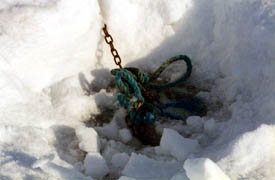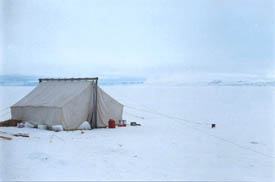In This Issue...
*
Fan Mail
*
F.I.D.O.: Kevin Slater
*
Dog Yard Noise
*
Road Food Inuit Dog Style
*
Differences in Mushing: Greenland and Arctic Canada, Part III
*
How Much is That Doggie in the Window?
*
Product Review: MAXIGUARD® Zn7™ Derm
*
IMHO: People, People, People
Navigating This
Site
Index of articles by subject
Index
of back issues by volume number
Search The
Fan Hitch
Articles
to download and print
Ordering
Ken MacRury's Thesis
Our
comprehensive list of resources
Talk
to The
Fan Hitch
The Fan
Hitch home page
ISDI
home page
Editor's/Publisher's Statement
Editor: Sue Hamilton
Webmaster: Mark Hamilton
The Fan Hitch welcomes your letters, stories, comments and suggestions. The editorial staff reserves the right to edit submissions used for publication.
Contents of The Fan Hitch are protected by international copyright laws. No photo, drawing or text may be reproduced in any form without written consent. Webmasters please note: written consent is necessary before linking this site to yours! Please forward requests to Sue Hamilton, 55 Town Line Rd., Harwinton, Connecticut 06791, USA or mail@thefanhitch.org.
This site is dedicated to the Inuit Dog as well as related Inuit culture and traditions. It is also home to The Fan Hitch, Journal of the Inuit Sled Dog.

One end of a chain picket line (Canada) held fast
to an ice davit Photo: Hamilton
A Visualization of Differences
Between
Greenland and Canadian Mushing, Part
III
by Sue Hamilton
Confinement of Dogs
Before the Inuit lived in permanent settlements, dogs ran
loose in
the camps. They were better socialized then. Eventually,
dogs were required
to be tied up. Today, although one will occasionally see
groups of dogs
(adults or puppies) kept in pens, the usual method of
confinement is picketing,
tied by a length of line to one or two fixed points.

Dogs picketed in
Canada
Photo:
Hamilton
In Canada, dogs are picketed in linear fashion and the material of choice is some manner of chain. The "drops" - the short section of chain off the main to which the dogs are attached - are either singles separated by a distance to prevent dogs from having contact with each other, or in pairs. An ice davit (a thick "bridge" of ice remaining after the ice on either side and underneath has been hacked away) is created to secure each end of the picket line.

In Greenland, dogs are tethered by the
end of their tuglines
to a single ice
davit
Photo:
Hamilton
In Greenland, the chain picket line is also used in town designated dog yards. Out on the trail the dogs remain in their harnesses with their polypropylene tug lines attached. In the same manner that tugs are fixed to the sled, they are bunched together at their terminal point and then tied to a line which is anchored to an ice davit or some other fixed point, if on land. All dogs have complete access to each other, although it is not uncommon to see them resting in a great circle.
Shelter
Thankfully, the art of building a snow house - iglu - is
still practiced
in both Canada and Greenland. An architectural marvel, it
comes in many
sizes and is incredibly warm and, in a raging windstorm,
incredibly peaceful.
However, modern temporary dwellings are commonly
used.

Canadian
tent
Photo:
Hamilton
In Canada the wall tent is typically seen. The dominant variety is the double wall Fort McPherson Tent. The tent is stretched out and held in place by lines attached to ice davits or four-liter (gallon) cans of Coleman™ fuel buried in the snow. The plastic tarp used to secure the contents of the qamutiq while traveling also serves as the "ground cloth", on top of which go the caribou hides and then the sleeping bags.

Spring 2000 in North Greenland. A
tent covering
two sleds. You
sleep on the sled on reindeer
skins.
Photo: Manfred Horender
Courtesy
of Greenland Tourism Photo Service
In Greenland tents are used as well but they are much smaller and set up over pairs of qamutiit.